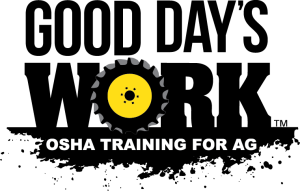Do you dread the dust from harvest? Do you end up feeling stuffed up, with a runny nose, a cough, and generally crappy?

Even in the short term, breathing in harvest dust can create health problems, but those issues can also compound in the longer term. We understand that hearing loss is cumulative, but do we think about the impact of breathing in dust over the years?
Dust can cause eye irritation, coughing, sneezing, hay fever, and asthma attacks. And though there isn't a direct link between dust inhalation and specific diseases or conditions, it's believed that breathing in dust in high concentrations over time can lead to reduced lung function and can contribute to things like chronic bronchitis.
If you take the proper precautions, you can protect yourself from harvest dust and reduce the likelihood of having a reaction.
Best Practices
Cab Cleanliness
Regularly de-clutter the cab and sweep the floor because extra items mean more surface area for dust to cling to. It doesn't need to be spotless, but keeping the cab mostly clean will reduce the amount of dust circulating in the combine operator’s space.
Cab Door
Look at the combine door to see that it fits tightly and is well sealed. You also need to inspect all the rubber gaskets around windows and doors to ensure they're in good condition. Running the fan can create a small amount of pressure in the cab and help minimize dust concentrations.
Air Filters
Air filters need to be installed in your combine cab, and when installing them, make sure it's done correctly. Keep the air filters clean and check to see that the gaskets are intact so that air is being filtered correctly.
Avoid Direct Exposure
Stay in the cab with the door closed when unloading. If you must be outside during the unloading, use the wind to your advantage so dust is blown away from you.
Wear a Respirator
Wear a NIOSH-approved N-95 dust mask respirator. Read the label and it will tell you what the respirator is designed for and how much it will protect you. An approved N-95 mask will filter out 95% of non-oil based airborne particles. These respirators come with two straps and metal adjustable nose clip to create the best possible seal. Take special care in the selection of masks to assure a fit that conforms to your face.

On the left is a dust mask respirator, and on the right is a powered air purifying respirator (PAPR).
Powered Air Purifying Respirators
When working around contaminated grain dust with bacteria, consider using a powered air purifying respirator (PAPR). A powered air purifying respirator features a helmet with mask and a pump. Air is pumped through the respirator filters and feeds fresh air into your breathing space. A built-in fan circulates filtered air to prevent fogging and it provides some cooling. This does not require a fit test. This piece of equipment may be unfamiliar to you, but they're commonly used in grain elevators and it could be invaluable for you as well, especially when working in moldy grains. It's already proven it can save lives. Don't know where to buy? Click right here. (Not affiliated or sponsored.)
Closing Words
Take measures to protect your respiratory system this harvest. We know this is busy time, but make time to stay on top of keeping filters and the combine cab clean. Manage what is in your control by avoiding direct exposures to dust whenever possible, whether or not you're sensitive to dust. Wear a NIOSH approved N-95 dust mask respirator when working in dust cannot be avoided. Keep stashes of these masks in zip lock bags in multiple locations including the combine, so you always have access to them. These simple measures can positively impact your health in the short term and for years to come, for you and the people around you.



